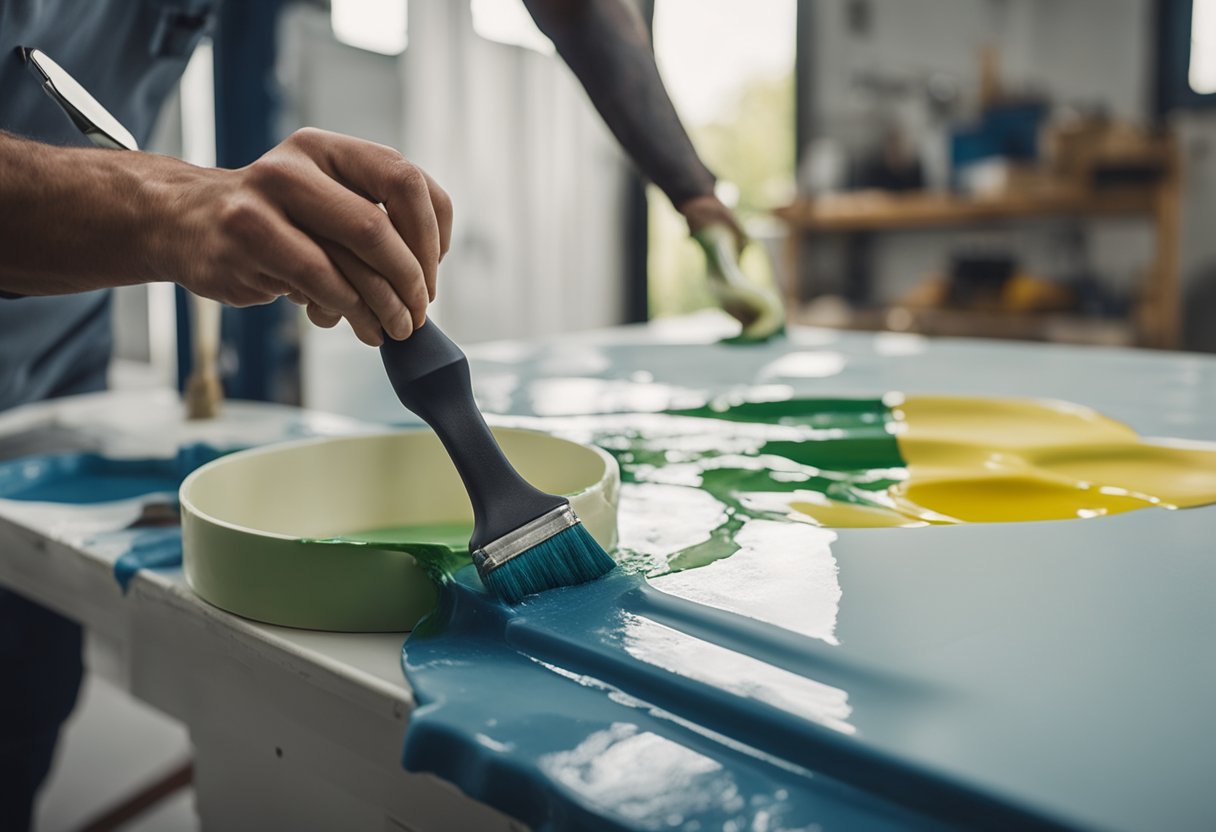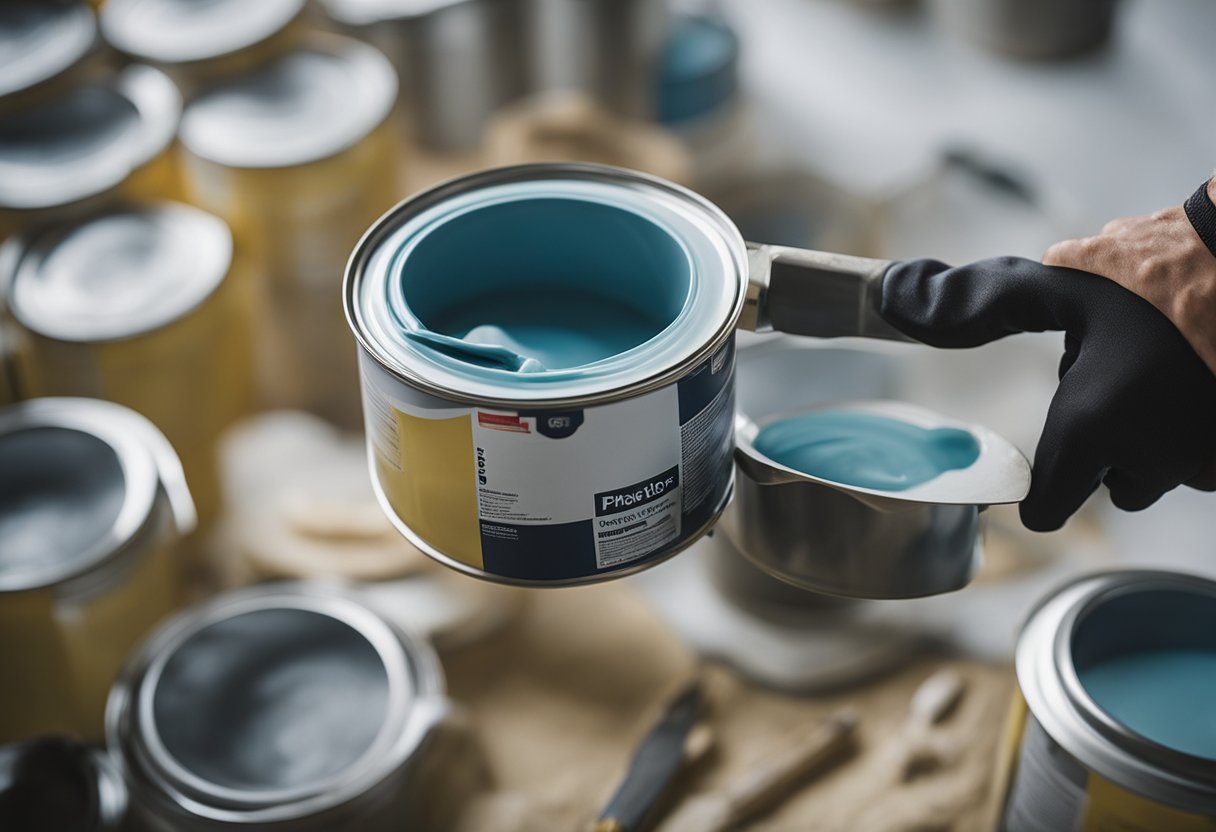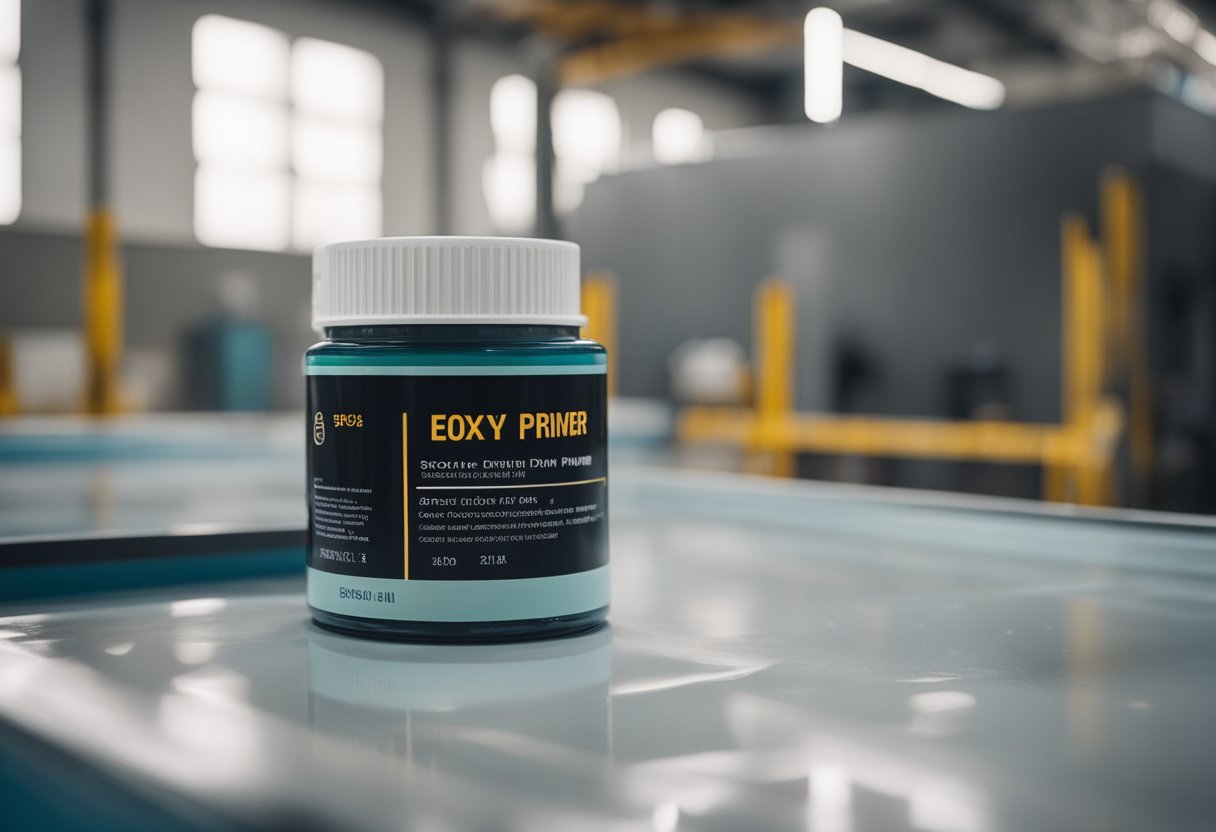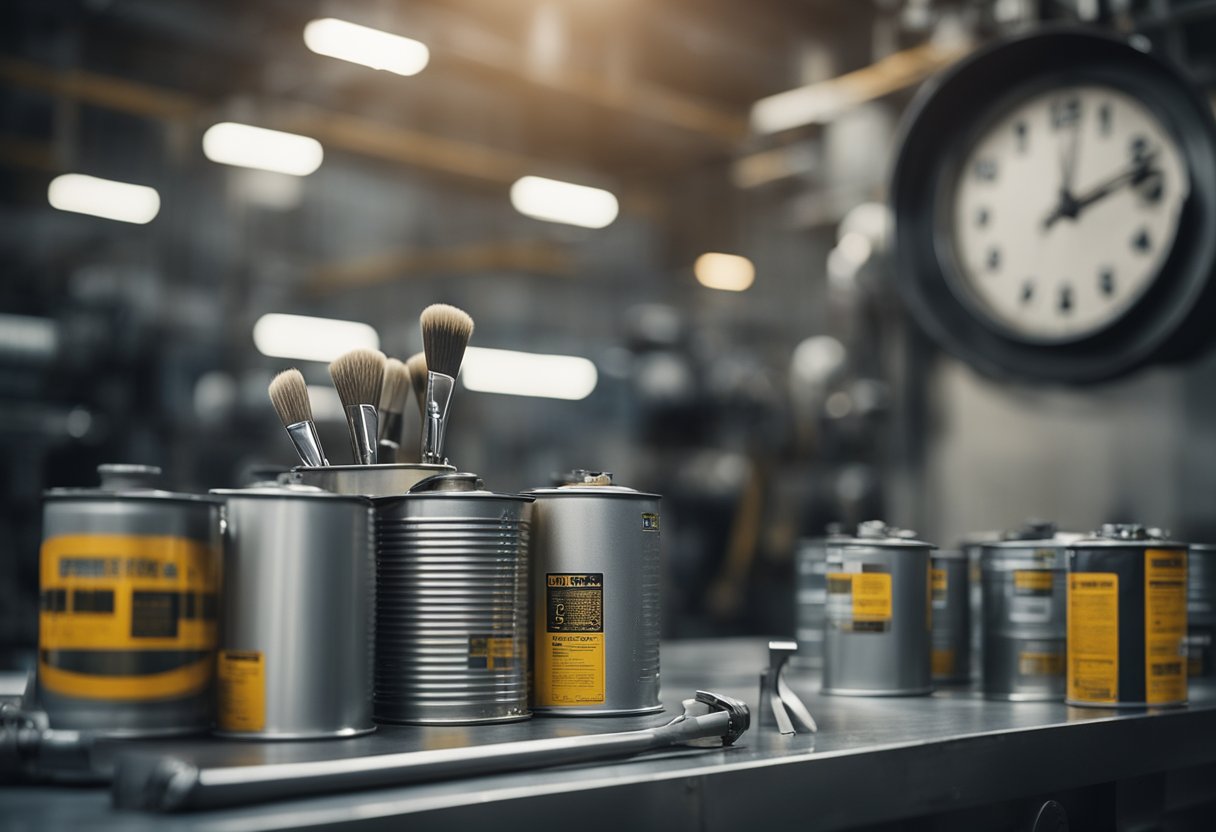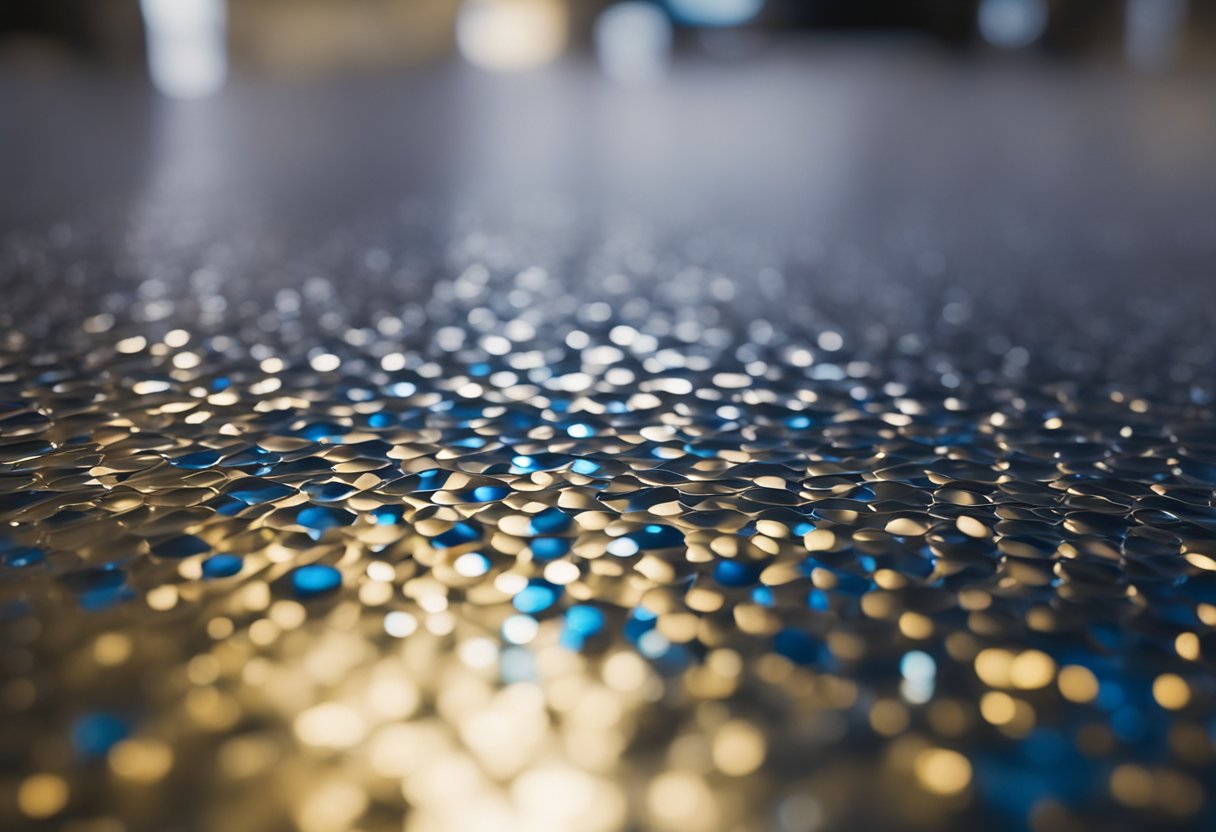When it comes to painting over epoxy primer, there are many factors to consider. Epoxy primer is a popular choice for many car detailers as it provides excellent protection against corrosion and is a great sealer. However, knowing when you can paint over it can be a bit tricky. In this article, I will provide you with some key information on how soon you can paint over epoxy primer.
Understanding epoxy primer is the first step in knowing when you can paint over it. Epoxy primer is a two-part system that consists of a resin and a hardener. Once mixed, the epoxy primer forms a strong bond with the surface it is applied to, making it an ideal choice for use on metal surfaces. However, it is important to note that not all epoxy primers are the same, and some may require different preparation techniques and application processes.
Preparation before painting is critical when it comes to painting over epoxy primer. Before painting, the surface must be thoroughly cleaned and free of any contaminants. Any imperfections in the surface must be repaired, and the surface must be sanded to ensure proper adhesion. Once the surface is properly prepared, you can then choose the type of paint to use over the epoxy primer.
Key Takeaways
- Understanding epoxy primer is critical when it comes to painting over it.
- Proper preparation before painting is essential for achieving a good finish.
- The type of paint you choose to use over the epoxy primer will depend on the specific project you are working on.
Understanding Epoxy Primer
https://www.youtube.com/watch?v=EBj_wz-2HW0&embed=true
As someone who has worked with epoxy primer, I can confidently say that it is a popular choice for car detailers and enthusiasts. Epoxy primer is a type of primer that is known for its excellent adhesion and corrosion resistance. It is a non-porous base that creates a strong bond between the metal surface and the paint.
Epoxy primers are made up of a two-component system that consists of a resin and a hardener. The chemical composition of epoxy primers allows them to cure quickly, which is a significant advantage for those who want to get their painting job done quickly.
One of the most significant benefits of using epoxy primer is that it creates a non-porous surface that prevents moisture and other contaminants from penetrating the metal surface. This feature makes epoxy primer an excellent choice for those who live in areas with high humidity or near the coast.
When it comes to curing, epoxy primers require a certain amount of time to cure completely. The curing time depends on the type of epoxy primer being used, the temperature, and the humidity. It is essential to follow the manufacturer’s instructions carefully to ensure that the epoxy primer has cured properly before painting over it.
In summary, epoxy primer is an excellent choice for those who want to protect their car’s metal surface from corrosion and ensure that the paint adheres correctly. It is a non-porous base that creates a strong bond between the metal surface and the paint. However, it is essential to follow the curing time and the manufacturer’s instructions carefully to ensure that the epoxy primer has cured properly before painting over it.
Preparation Before Painting
Before painting over epoxy primer, it is crucial to ensure that the surface is properly prepared. The preparation process involves removing any contaminants from the surface and scuffing the surface to create a rough texture that the paint can adhere to. Here are some steps to follow when preparing a surface for painting over epoxy primer:
-
Clean the surface: Use a degreaser to remove any oil, grease, or other contaminants from the surface. This is important because any contaminants left on the surface can affect the adhesion of the paint.
-
Scuff the surface: Scuff the surface of the epoxy primer with a scuffing tool or fine sandpaper. This will create a rough texture that the paint can adhere to. Be sure to scuff the entire surface, paying special attention to any bare metal surfaces.
-
Inspect the surface: After scuffing the surface, inspect it for any remaining contaminants or areas that need further prep work. If you find any areas that need further prep work, repeat the cleaning and scuffing process until the surface is clean and properly prepared.
By following these steps, you can ensure that the surface is properly prepared for painting over epoxy primer. This will help ensure that the paint adheres properly and lasts for a long time.
Types of Paint to Use Over Epoxy Primer
https://www.youtube.com/watch?v=G1foXJbibmA&embed=true
When it comes to painting over epoxy primer, there are a few types of paint that you can use. The type of paint you choose will depend on the type of project you are working on and the desired finish.
Water-Based Paint
Water-based paint is a popular option for painting over epoxy primer. It is easy to apply, dries quickly, and is more environmentally friendly than oil-based paint. Water-based paint is also less likely to yellow over time, making it a good option for light-colored finishes.
Oil-Based Paint
Oil-based paint is another option for painting over epoxy primer. It is more durable than water-based paint and can provide a smoother finish. However, oil-based paint takes longer to dry and can emit harmful fumes during application. It is also more difficult to clean up than water-based paint.
Base Coat
If you plan on using a base coat before painting over epoxy primer, it is important to choose a compatible type of paint. Oil-based paints should be used with oil-based base coats, while water-based paints should be used with water-based base coats. Using the wrong type of base coat can cause the paint to peel or crack over time.
Latex Paint
Latex paint is a type of water-based paint that is commonly used for interior walls and ceilings. It is easy to apply, dries quickly, and is more resistant to fading and cracking than oil-based paints. However, latex paint is not as durable as oil-based paint and may not be suitable for high-traffic areas.
Overall, when choosing a type of paint to use over epoxy primer, it is important to consider the type of project you are working on and the desired finish. Water-based paint is a good option for light-colored finishes, while oil-based paint is more durable and can provide a smoother finish. Using a compatible base coat is also important to ensure that the paint adheres properly to the epoxy primer.
Application Process
https://www.youtube.com/watch?v=OeENuO6-ukk&embed=true
When it comes to painting over epoxy primer, it is important to follow the manufacturer’s instructions carefully. The first step is to ensure that the primer has fully dried and cured before applying any topcoat. This can take anywhere from 24 to 48 hours, depending on the specific product and environmental conditions.
Before applying the topcoat, it is important to scuff the surface of the epoxy primer with a fine-grit sandpaper to ensure proper adhesion. This will create a fresh surface for the paint to adhere to and help ensure a uniform finish.
When it comes to applying the topcoat, there are a few different methods to choose from. One option is to use a spray gun, which can provide a smooth and even finish. Alternatively, a brush or roller can be used, although this may result in a slightly thicker coat of paint.
When selecting a topcoat, it is important to choose a product that is compatible with epoxy primer. This will help ensure that the two coatings bond properly and provide a durable and long-lasting finish. It is also important to consider the thickness of the topcoat and whether a filler or sealant may be needed to achieve the desired level of gloss and protection.
Overall, following the proper application process is key to achieving a high-quality finish when painting over epoxy primer. By scuffing the surface, selecting a compatible topcoat, and applying it carefully and evenly, you can achieve a professional-looking result that will stand the test of time.
Curing and Drying Time
As someone who has worked with epoxy primer before, I know that it is a popular choice for protecting metal surfaces from rust and corrosion. However, when it comes to painting over epoxy primer, it is important to understand the curing and drying times to ensure that you get the best results.
Fresh epoxy primer typically takes around 24 hours to dry, but it can take up to 48 hours to fully cure. During this time, it is important to avoid touching or disturbing the surface to prevent any damage to the primer. Additionally, it is recommended to wait until the primer is fully cured before painting over it to ensure that the paint adheres properly.
Once the epoxy primer has cured, it becomes a durable and long-lasting coating that can provide excellent protection for metal surfaces. However, it is important to note that the curing time can vary depending on the specific product used, so it is always best to follow the manufacturer’s recommendations.
To help speed up the curing process, some heating methods can be used. For example, using a heat gun or placing the surface in a warm, dry area can help to accelerate the curing time. However, it is important to be cautious when using these methods to avoid overheating or damaging the surface.
In summary, the curing and drying time of epoxy primer is an important factor to consider when painting over it. Waiting until the primer is fully cured before painting over it can ensure that the paint adheres properly and provides long-lasting protection for metal surfaces.
Troubleshooting and Solutions
After applying epoxy primer, it is important to wait for the recommended time before painting over it. Failing to do so can result in adhesion issues, which can lead to paint peeling or flaking off.
To avoid adhesion issues, it is essential to follow the manufacturer’s instructions and wait the recommended time before painting over the epoxy primer. It is also important to ensure that the surface is clean and free of any contaminants before painting.
Epoxy primer is known for its excellent corrosion resistance properties. However, if there are any areas where the primer has failed to adhere properly, it can lead to corrosion. In such cases, it is recommended to remove the primer and start again to ensure proper adhesion and corrosion resistance.
High build primer is a type of primer that is designed to fill in minor surface imperfections. This primer is often used in conjunction with epoxy primer to create a smooth surface for painting. It is important to note that high build primer should only be applied after the recommended time has elapsed since the application of the epoxy primer.
Self-etching primer is a type of primer that is commonly used on bare metal surfaces. This primer contains an acid that etches the surface of the metal, creating a surface that is more receptive to paint. If you are using self-etching primer, it is important to follow the manufacturer’s instructions and wait the recommended time before painting over it.
Etch primer is another type of primer that is commonly used on bare metal surfaces. This primer contains an acid that etches the surface of the metal, creating a surface that is more receptive to paint. If you are using etch primer, it is important to follow the manufacturer’s instructions and wait the recommended time before painting over it.
Spray etch primer is a type of etch primer that is applied using a spray can. This type of primer is often used for small touch-up jobs. If you are using spray etch primer, it is important to follow the manufacturer’s instructions and wait the recommended time before painting over it.
In summary, it is important to wait for the recommended time before painting over epoxy primer to ensure proper adhesion and corrosion resistance. It is also essential to follow the manufacturer’s instructions when using high build primer, self-etching primer, etch primer, and spray etch primer. By doing so, you can ensure a smooth and durable finish for your paint job.
Benefits and Drawbacks
When it comes to painting over epoxy primer, there are both benefits and drawbacks to consider. Here are some of the key points to keep in mind:
Benefits
- Corrosion Resistance: Epoxy primer is known for its excellent resistance to corrosion, making it an ideal choice for metal surfaces that are exposed to moisture and other corrosive elements.
- Good Adhesion: Epoxy primer provides a strong bond with the surface it is applied to, which means that the paint will adhere well and last longer.
- Rust Prevention: Epoxy primer contains anti-rust agents that help to prevent rust from forming on the metal surface, which can extend the life of the paint job.
- Waterproofing: Epoxy primer is waterproof, which means that it can protect the metal surface from water damage and other types of moisture.
Drawbacks
- Durability: While epoxy primer is durable, it can be difficult to remove once it has been applied. This can make it challenging to make changes to the paint job down the line.
- Coverage: Epoxy primer can be difficult to apply evenly, which can result in uneven coverage and an unattractive finish.
- Resistance to Corrosion: While epoxy primer is resistant to corrosion, it is not completely corrosion-proof. If the surface is exposed to harsh conditions, such as saltwater or chemicals, it may still corrode over time.
Overall, epoxy primer is a good choice for metal surfaces that need to be protected from corrosion and moisture. However, it is important to keep in mind that it can be difficult to work with and may not be suitable for all applications.
Special Considerations for Various Surfaces
When it comes to painting over epoxy primer, it’s important to consider the type of surface you’re working with. Different surfaces may require different techniques or considerations to ensure a successful paint job.
Metal Surfaces
Epoxy primer is an excellent choice for metal surfaces because it provides a thin layer that offers excellent adhesion. However, before painting over epoxy primer, it’s important to ensure that the surface is clean and free of any imperfections. Any oxidation or other imperfections on the surface can cause problems with adhesion, so it’s important to address these issues before painting.
Plastic Surfaces
While epoxy primer can be used on some plastic surfaces, it’s important to note that not all plastics are created equal. Some plastics may not be compatible with epoxy primer, so it’s important to test a small area first to ensure that the primer will adhere properly. Additionally, it’s important to note that some plastics may require a special adhesion promoter to ensure that the paint will adhere properly.
Concrete Surfaces
Epoxy primer is an excellent choice for concrete surfaces because it provides a thin layer that offers excellent adhesion. However, before painting over epoxy primer, it’s important to ensure that the surface is clean and free of any imperfections. Any oxidation or other imperfections on the surface can cause problems with adhesion, so it’s important to address these issues before painting.
Wood Surfaces
While epoxy primer can be used on some wood surfaces, it’s important to note that not all woods are created equal. Some woods may not be compatible with epoxy primer, so it’s important to test a small area first to ensure that the primer will adhere properly. Additionally, it’s important to note that some woods may require a special sealer to ensure that the paint will adhere properly.
Steel Surfaces
Epoxy primer is an excellent choice for steel surfaces because it provides a thin layer that offers excellent adhesion. However, before painting over epoxy primer, it’s important to ensure that the surface is clean and free of any imperfections. Any oxidation or other imperfections on the surface can cause problems with adhesion, so it’s important to address these issues before painting.
In conclusion, when painting over epoxy primer, it’s important to consider the type of surface you’re working with and take any necessary steps to ensure that the paint will adhere properly. By following these guidelines, you can ensure a successful paint job that will last for years to come.
Frequently Asked Questions
https://www.youtube.com/watch?v=N21QACpotsA&embed=true
How long should I wait before painting over epoxy primer?
The wait time before painting over epoxy primer varies depending on the manufacturer’s instructions and the environmental conditions. However, most epoxy primers require a minimum of 24 hours to dry and cure. It is recommended to wait at least 48 hours before applying a topcoat to ensure that the primer is fully cured and ready for painting.
Can I apply top coat directly over epoxy primer?
Yes, you can apply a topcoat directly over epoxy primer. However, it is important to make sure that the primer is fully cured before applying the topcoat. Applying a topcoat too soon can cause the primer to lift or peel, resulting in an uneven finish. It is also important to follow the manufacturer’s instructions for the topcoat to ensure proper adhesion and durability.
What types of paint can be used over epoxy primer?
Epoxy primer is compatible with a wide range of paints, including urethane, lacquer, enamel, and acrylic. However, it is important to choose a paint that is compatible with the specific type of epoxy primer you are using. Always check the manufacturer’s instructions for recommended paint types and application methods.
Will epoxy primer adhere to old paint?
Epoxy primer can adhere to old paint, but it is important to properly prepare the surface before applying the primer. The surface should be clean, dry, and free of any contaminants or loose paint. It is also recommended to lightly sand the surface to promote adhesion.
What is the best way to prepare epoxy primer for painting?
The best way to prepare epoxy primer for painting is to lightly sand the surface with 400 grit sandpaper to promote adhesion and remove any imperfections. After sanding, clean the surface with a wax and grease remover to remove any contaminants and ensure a clean surface for painting.
Can I paint over epoxy primer without sanding?
While it is possible to paint over epoxy primer without sanding, it is not recommended. Sanding the surface promotes adhesion and helps to remove any imperfections, resulting in a smoother and more even finish. Skipping this step can result in a less durable and less visually appealing finish.

Hi, I’m Sal Muller of Tooltrip.com. My DIY experience led me to understand essential power tools for home projects. Tooltrip.com guides enthusiasts and professionals in choosing right tools for any job. I provide concise top tool reviews for easier, efficient DIY.

